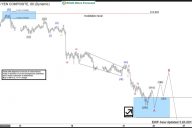<< Read More: Don’t Fall Victim To Home Country Bias
Last week, I introduced you to the concept of home-country bias – a phenomenon that routinely leads investors to over-allocate to domestic stocks.
Americans prefer to invest in U.S. stocks because, psychologically, it feels like the right thing to do.
But it’s not!
U.S. stocks outperform foreign stocks only half the time, roughly. So, following the logic, a portfolio that is always concentrated in U.S. stocks is guaranteed to underperform about half the time.
My message last week was a stern warning aimed at U.S. investors.
Don’t get complacent!
Don’t extrapolate the past into the future… assuming U.S. stocks will outperform for the next 10 years, just because they have for the last 10 years.
Take a look at this chart, which shows 10-year total returns of the top 15 global economies.

Anything jump out at you?
U.S. stocks have trounced foreign markets for the last decade. We know this.
Now, take a look at
this
chart, which shows 2017 year-to-date returns…

What jumps out at you this time?
Anyone who assumed U.S. stocks would outperform in 2017 has so far been disappointed. A number of foreign stock markets have proven to be better bets.
But again, buying foreign stocks is something most investors don’t feel comfortable doing. Tying up your hard-earned capital in foreign stock plays feels riskier. But in reality, it isn’t.
You see, I’m not a proponent of buying foreign stocks and holding them indefinitely.
Instead, I use a forward-looking algorithm to identify pockets of outperformance opportunity in foreign stock markets – “sweet spots,” if you will.
I use the Cycle 9 Alert system that I developed over five years ago.
To truly understand the power of these foreign market “sweet spots,” I’ve run some analysis that shows the annualized return of foreign markets.











No Comments